Moving Through Pain – One Athlete’s Journey From Pain to Performance
When I young, I believed that to endure and overcome pain was an essential part of becoming a successful athlete. Pain wasn’t just essential, it was glorious. An athlete’s pain either came through training like a Rocky montage or in the crucible of competition. For years, I found little to contradict this concept.
It wasn’t until recently that I became intimately aware of another type of pain that exists in the lives of many athletes, a pain that is far less glamorous and certainly less sought after: the pain associated with injury and disfunction.
Whether caused by an acute injury or repetitive overuse, this pain is insidious and neither temporary nor rewarding. It settles into an athlete’s life, constantly affecting mood, clouding thoughts, disrupting sleep and impairing performance.
In one of the most public examples of this pain, Colt’s Quarterback Andrew Luck walked away from fame, celebrity and a contract worth millions of dollars stating, “I haven’t been able to live the life I want to live. It’s [injury and pain] taken the joy out of this game … the only way forward for me is to remove myself from football.”
When I was healthy and injury-free it was hard to put myself in those shoes. But about a year ago, I too found myself grappling with pain that was ruining my sport. I had to dig deep to find inspiration, motivation and a strategy to help me cope with pain and continue the sport I loved.
My Journey as an Athlete
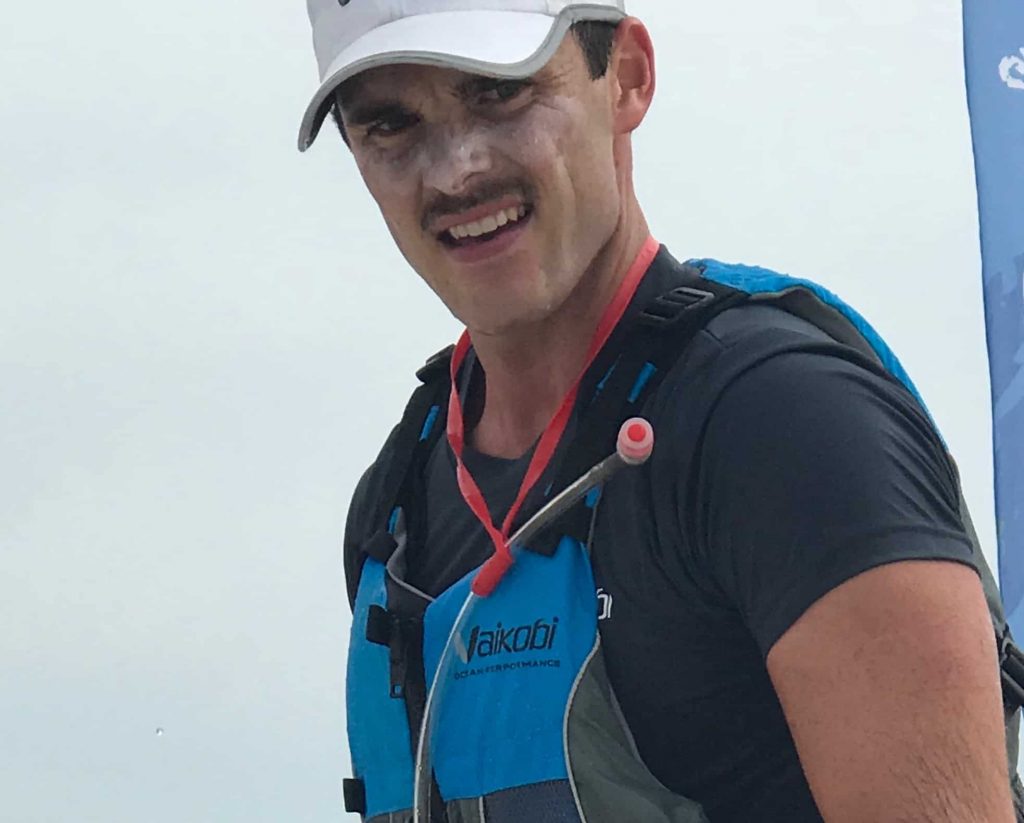
I am not an NFL star, nor are million-dollar contracts hinging on my performances, but since the age of 12, I have been obsessed with kayaking. I raced in whitewater slalom through high school and college with a dream of going to the Olympics for the US.
I spent over a decade chasing the Olympic dream, but after failing to make the team at the London Olympic Team Trails in 2012, it was time for a change. That was when I stumbled upon kayaking in the ocean. Specifically, I found a sport called Surfski. Distilled to a sentence, surfski is long-distance ocean kayaking where you utilize the energy of the ocean (waves, currents, swell, etc.) as well as your own fitness to race head-to-head against a field of competitors. It was an easy transition for me as I have always loved the ocean and much of my experience in whitewater transferred to surfski beautifully.
I trained and raced recreationally for 4 years and then at the age of 26 I decided to get serious and turned pro (or as pro as one could get in an obscure sport most people have likely never heard of). I spent three years racing internationally and living my dream of being a professional athlete. But then I got injured.
It was a minor injury (essentially just a partially torn muscle in my back), but it had ramifications I still combat today. The initial pain of the injury and subsequent weakness on my left side altered my stroke. The placement of my paddle, the power profile of my stroke in the water, and even subtle body mechanics throughout my whole left side changed after my injury. A subtle discrepancy might not sound like much of an issue, but a single training session can accumulate anywhere between 5,000 and 15,000 strokes on each side. I was typically training twice a day most days. The overall strain on my left side became more than my body could bear. That was when the real pain started.
The Dark Cloud of Pain
The pain for me started small, just a mild discomfort in the muscles around my shoulder. Some muscles would feel achingly tight, while others would feel slightly wrenched out of place. However, as the cumulative strain from the imbalance started to compound, the pain progressed from mild annoyance to a life-altering presence. And, as it was a disfunction in the way I did my sport, it wasn’t an injury I could just rest or target and fix.
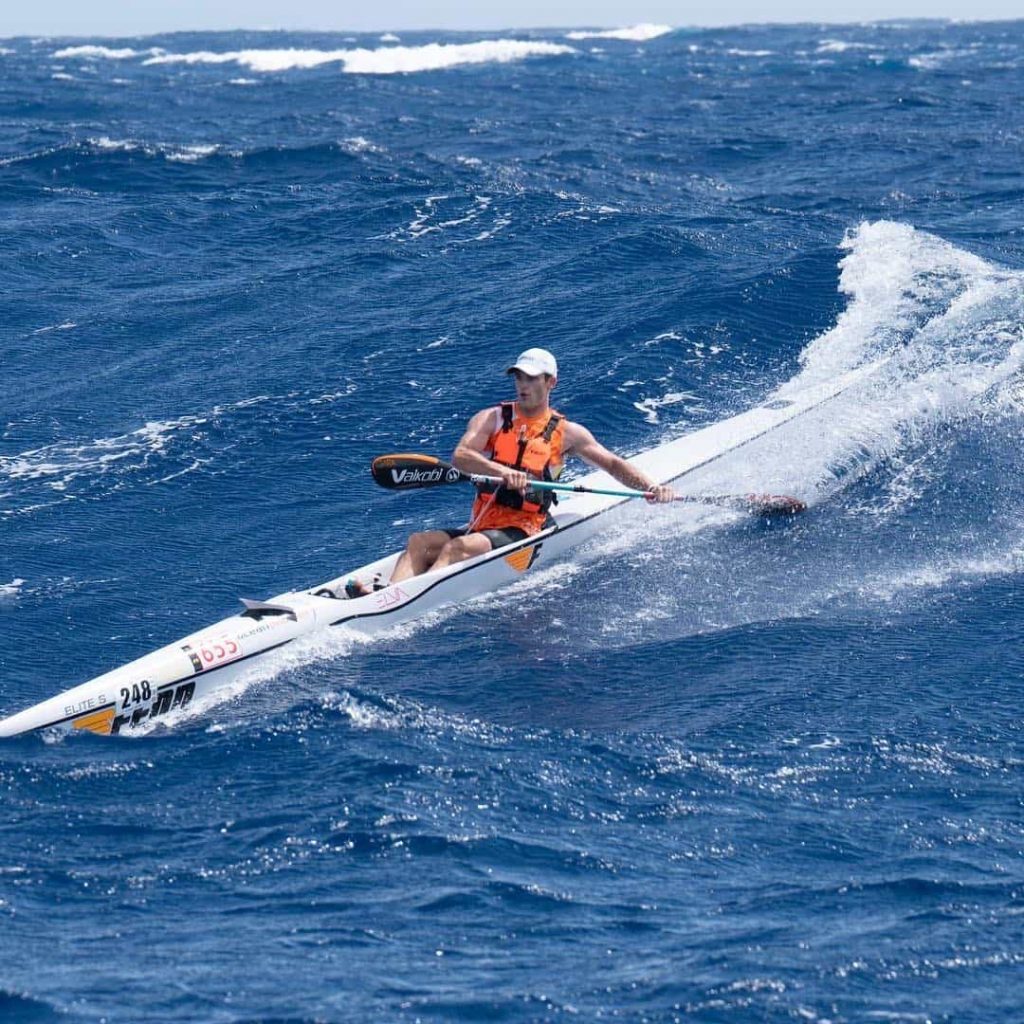
I spent every training session agonizing over correcting my stroke, scrutinizing everything from leg drive to rotation, shoulder position to the angle of entry of my paddle into the water. BUT after every paddle, the pain would still be there, and it wouldn’t subside after the workout ended. It followed me around during the day, aching. If I slipped up, for example, slumping over my desk loading my shoulders while on the computer or sleeping on my left side, I would feel the pain three times as intensely.
I had had injuries before, a joint angry from overuse, a pulled or strained muscle, skin rubbed down to a wound raw from friction and saltwater. I knew that pushing my body to its limit would result in complications, so I would tend to them. I adapted my training or daily routine, completely rested, or sought rehab and the pain would eventually go away. But this time was different.
Frustration Set In
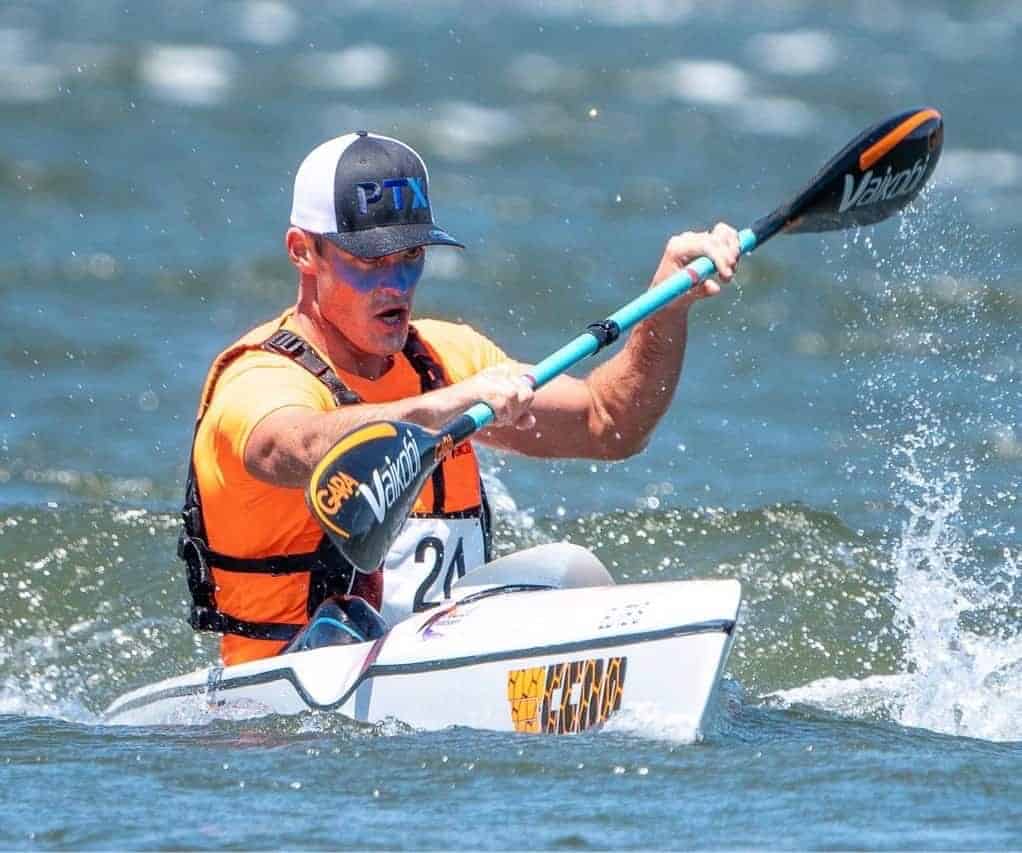
I wasn’t sure what to do. Days turned into weeks and before I knew it, I had spent two months scaling back my training and accomplishing what felt like nothing. I spent all day thinking about my shoulder pain, how to fix it, how it was holding me back. I could feel the season slipping away. I had so much planned for that year, but my body just wasn’t cooperating.
By the third month, I was questioning what I was doing. Like Andrew Luck, I had lost the love of the sport that meant so much to me. I was tired, frustrated, and defeated. I thought seriously about quitting. I wasn’t making progress fixing my stroke and the amount of training I could actually accomplish felt pitifully insufficient. I wondered if it was possible to cancel my trips, pay back my sponsors and save myself the embarrassment of underperforming. What was the point of putting myself through this? And that was when I found Kelly Starrett and The Ready State.
Kelly Starrett and The Ready State Mentality
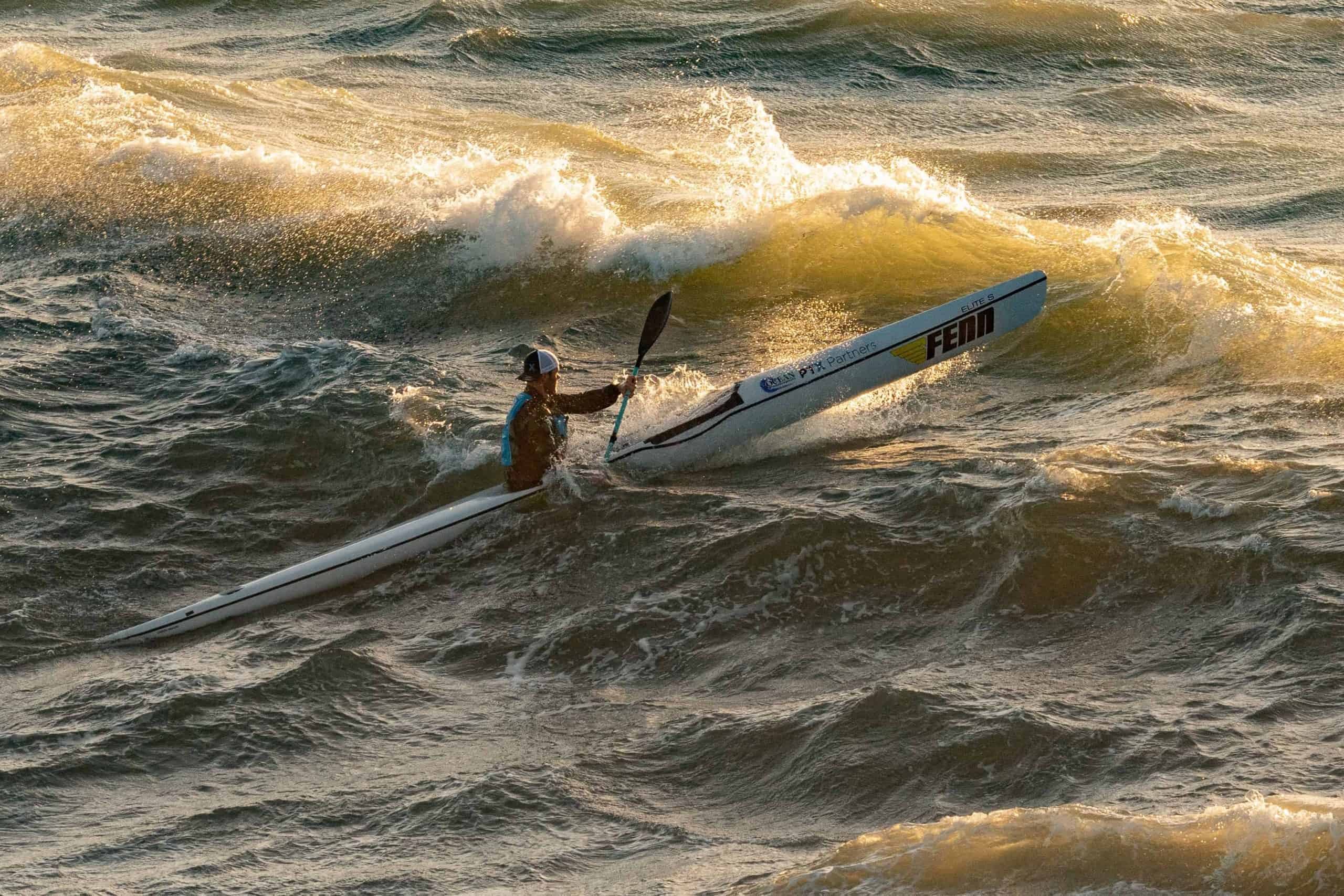
I was introduced to Kelly through a mutual friend and in our first meeting, I could physically feel his energy. Within minutes of meeting me, it felt like he truly believed in me as an athlete and a person. I would learn later that it was that belief that not only made him unique but drove the ethos of The Ready State. Kelly was optimistic in a way I hadn’t been in months, and he was determined to keep pain from ruining my relationship with kayaking.
As a physical therapist and a paddler himself, he had a myriad of ideas and insights into potential weaknesses that were flying under my radar. He showed me ways my body might be compensating for those imbalances and introduced targeted exercises. He knew that the work in the gym might not fix my stroke, but I could become a more robust athlete to handle the strain of my wonky stroke (my first dose of The Ready State).
Kelly didn’t have a magic bullet or a single solution that simply “fixed” me. He offered a shift in my mindset, a change to the way I was looking at my experience as an athlete. I was in pain, but I wasn’t stuck. I was limited in the sessions I could do on the water, but that only meant I would have to become more thoughtful and creative when it came to my training. It was time to start moving forward again.
Areas of Focus to Keep Moving Forward
There were quite a few avenues of training and exploration that I spent time with after my talk with Kelly, but the list below highlights a few that still resonate with me.
Movement, Mechanics, and Mobility
In addition to the exercises Kelly showed me in person, he also turned me on to
The Ready State app (then MobilityWOD). He firmly believes athletes/people deserve to have agency over their pain and they deserve to have the resources and tools to perform maintenance on themselves. Using this app, I learned to become “ready” and address any limitations or imbalances that could be part of my pain.
For example, I found tightness in my rotator cuff muscles that severely limited internal rotation. My lats needed daily soft tissue work. Also, my hamstrings and glutes were often inactive and weak because of constantly being seated during the day and even when paddling. I will stop there to keep the list manageable, but on the whole, I gained an appreciation for the function of my body and the work required to keep it healthy.
The Ready State helped me gain a heightened appreciation for warming up and mobilizing my body before training, making sure that each session began with purpose, care and mindfulness. Plus, Kelly created a hip and shoulder spin-up specifically for paddle sports.
Meditation
Meditation was one of those things I knew I should be doing but never found the time to practice. I made a point of trying to meditate daily, even if I only had a few minutes. Sometimes I would just think about my breathing and try to focus on the process. Other times I simply listened to the world around me, noting thoughts as they came, but not following them in any particular direction. Other times I would remind myself of all the things for which I was grateful. Meditation helped me shift my attention away from the panic of my left stroke, my pain, and my lack of improvement on the water.
Cold Water Exposure
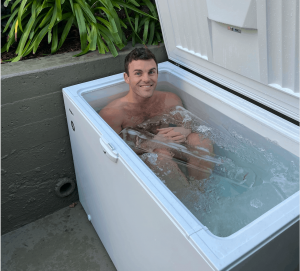
My decision to pursue cold water exposure was also a recommendation from Kelly. He encouraged me to try it for the numerous health and psychological benefits. Most importantly, I found the cold therapy to be profoundly helpful combatting the melancholy that had seeped into my life. The exposure led to an immediate and significant mood boost after every practice. What’s more, my routine of getting into the cold water was a small challenge I could overcome every morning. It was something I rarely wanted to do at 6 a.m., but I would do it. Conquering that challenge gave me a sense of accomplishment and momentum that carried through my day. After only three to four minutes of cold exposure every morning, I was well on my way to a successful day.
Nutrition
I also returned my focus to my nutrition. It has always been important to me and I am a strong believer that the fuel source has a huge impact on performance. However, it is easy to start “coasting” when it comes to nutrition. I realized I was letting small things slide when it came to when, what and how much I was eating.
I had worked with an incredible nutrition coach at KGB Wellness in 2017. Kelsey Graham completely revamped my diet, transformed my body and increased my ability to absorb high training volumes. I decided to return to eating enough, at the right macronutrient breakdown, and getting a diverse diet of vegetables and fruits. I spent more energy shopping, cookinhttps://www.kbgwellness.com/g and preparing my meals as well. It felt empowering to again be taking agency over yet another important aspect of my training and performance.
The Art of Breath
Training at San Francisco CrossFit with Kelly, I was lucky enough to meet Brian Mackenzie (founder of Power, Speed, Endurance). He exposed me to a world of breath that I had completely ignored up to that point in my training. For all of my athletic life, I assumed that a healthy and high functioning respiratory system was merely a byproduct of normal training. Brian helped me understand that the respiratory system was a powerful tool and could be specifically and effectively trained to enhance performance both in my training sessions and outside of them. I began incorporating nasal breathing into my longer aerobic training sessions. At first, I could hardly go 15 minutes before I was forced to transition, gasping, to mouth breathing, but I strengthened that skill until I could easily train at a solid aerobic pace for two hours on nose breathing only.
I also started exploring and using his “gear system” of breathing in all types of training. I worked on hypoxia training to challenge my body to perform in an anaerobic state without requiring the brutal intervals to get there. This minimized the stress on my shoulder and allowed me to train for that experience at the same time. Finally, I explored different PSE breathing protocols to down-regulate and speed up recovery after my sessions. It was a fascinating new sphere of training for which I found a real passion. I almost felt lucky to have been derailed in my paddling.
A New Mindset

My change in training protocols gradually transformed my attitude. I renewed my excitement to watch myself grow on all levels, not simply succeed in winning. This also led to a change in my pain. It never went away, and it bothered me off and on for the entire season, but it improved. Once again I was able to get to a place where I could train hard and enjoy the journey of being an elite athlete. Thanks to Kelly, my 2019 season ended up being the best season of my life where I finished 5th in the World Surfski League rankings.
—Austin
https://www.austinkieffer.com/about-me












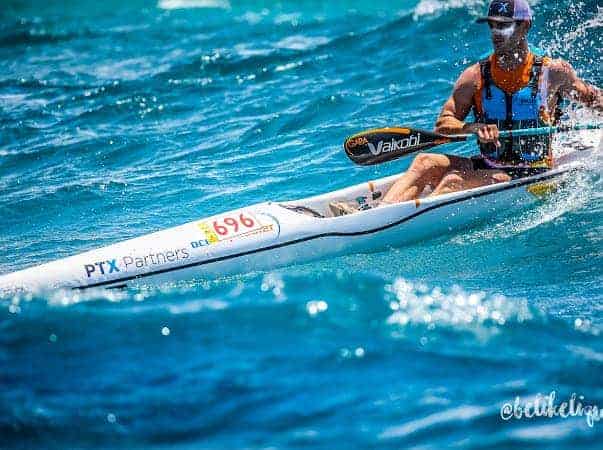






TRS Virtual Mobility Coach
Guided mobilization videos customized for your body and lifestyle.
FREE 7-Day Trial